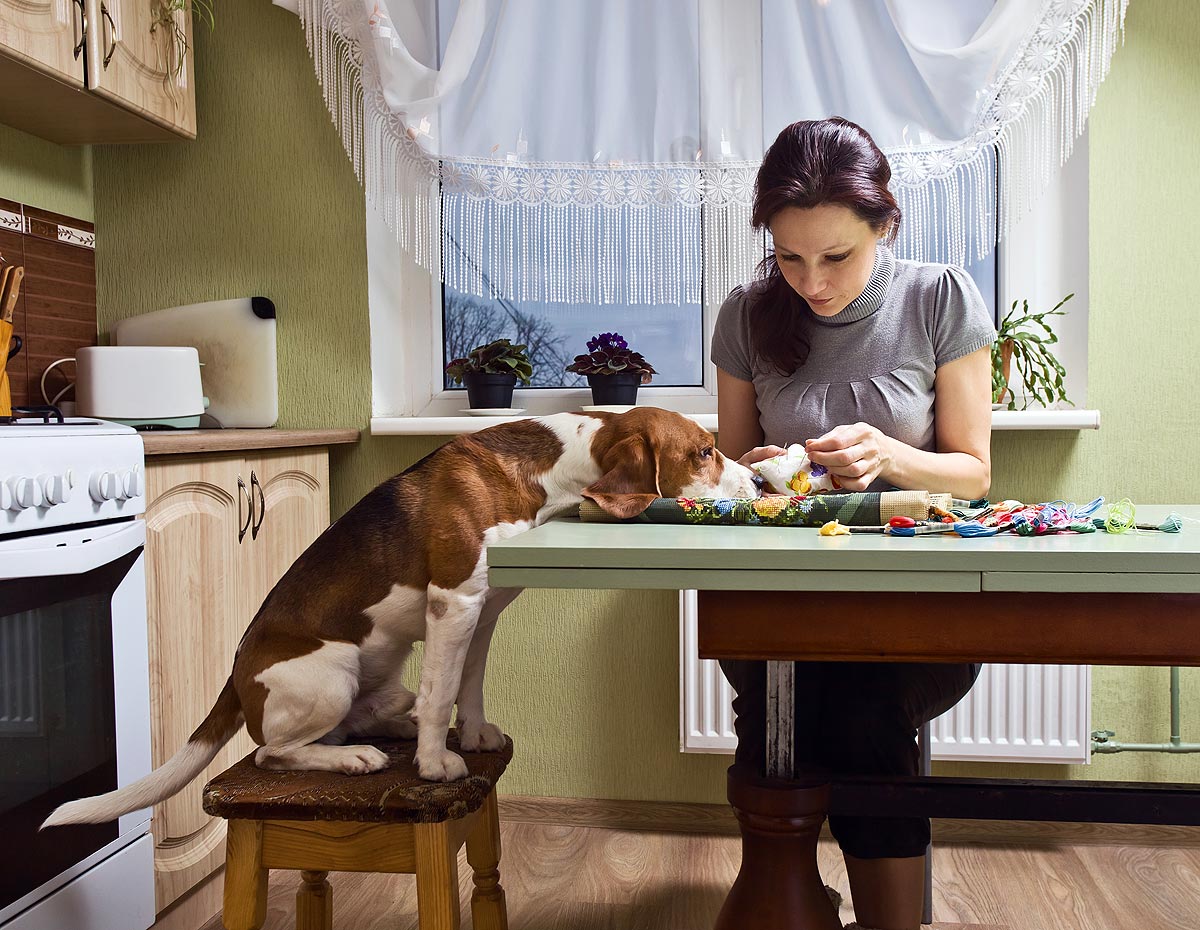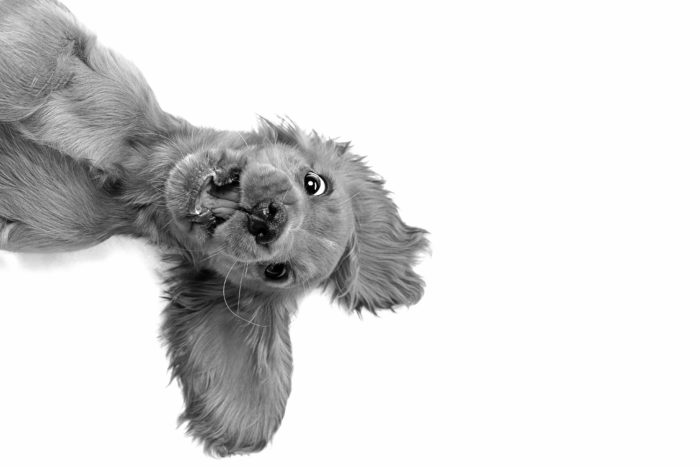
The more I learn, grow and evolve in my field, the more I dislike the word ‘obedience’. It denotes subordination. Our dogs don’t owe us, if anything we owe them. I think a solid education taught without force and with plenty of positive reinforcement would be a great starting point.
Lately I have been calling behaviors like sit, lie down, come, loose leash walking, leave it and off ‘everyday moves’ or EDMs. These are things the pup already knows how to do; it is just much easier, fun and safer when he does them reliably for us. I think that the ‘EDMs’ we would like our dogs to do are similar to our parents teaching us manners as we grow up. Knowing how to do particular things and behave in certain ways in certain situations can help us get along better in life. Perhaps be welcome in more places too. When we are gracious and patient we make the world a nicer place for ourselves and for others. The same goes for our pups. When we take the time to teach them certain behaviors this may allow them to be out with us more often and to feel safe and calm in life.

The pet industry is a multi billion-dollar industry but the dollars in the dog sector are barely being spent on education. The majority is being spent on food and vet bills with a tiny piece of the pie going towards training classes. Preventable behavioral problems remain the number one reason dogs are relinquished or euthanized so it seems to me more attention to training and behavior could go a long way to help ensure that our dogs are able to live long, happy lives.

There is a process involved in your dog’s education; a series of steps necessary in order to achieve a particular outcome. This process often requires a financial investment and it will require your time and energy as well.
The early steps look like this:
1. Decide what you want to learn and who will teach you. Special consideration is to be taken with puppies that should not be denied an early education. They have specific needs that must be met within a certain time frame.
2. You learn.
3. Your dog learns from you.
4. Use everything you and your dog are learning and apply it into everyday life.

When you are learning new behaviors practice is important, so is a sense of humor and patience. Rome wasn’t built in a day! Expect for things to feel crunchy and awkward, expect to make mistakes. It is part of the process! Think about how complex this is, a new student learning new skills to teach to an entirely different species their own new skills!
If one takes private lessons you will most likely be learning in a static environment with little to no distractions. If one opts for a group class setting it may be very distracting for the pup and difficult to keep his attention in which case new students may get discouraged. Please don’t give up!
When you first start to practice your moves at home a quiet, distraction free environment is preferred. This type of set up is ideal for the learning process for both the dog and the student but it is imperative that as both pup and person get more comfortable and skilled the behaviors are practiced in more distracting environments and it doesn’t end there.
The main event comes when you start to incorporate these behaviors into everyday life. This is how the dog and you and the rest of the family start to really mesh and gel. This process doesn’t end; it is on going throughout the dog’s life. Just like us dogs don’t remain the same once they have learned something. They can get rusty or other factors can play a part in their behavior changing. There are also different stages of the dog’s life that bring with them their own unique delights and challenges.
It is inadvisable for a variety of obvious reasons to give a puppy total freedom in the house and often an adolescent dog is given too much freedom too soon. This is evident when things start to feel out of control just when you thought your dog was ‘trained’ enough to be left out of the crate. Always take into account your dog’s age and previous training. Keep your goals and expectations in keeping with what is realistic. Most often when we aren’t getting the behavior we want from our dogs it is due to under-training or, our expectations are not aligned with what the dog is capable of doing. A couple of examples of this are a puppy with a short attention span not staying or an adolescent dog not coming away from a wonderful distraction.
Brand new pups should begin to be educated about the ways of the world with you from the minute you bring them home. The sessions will be short and the lessons will be rudimentary but a pup is a sponge and will be learning with or without your input. Wouldn’t you rather be involved in the process!
The predominant thing that I want to specify here is that you must take the stuff you are teaching your dog and start to use it day-to-day so that you both benefit from it. If the EDMs don’t get practiced in everyday settings and are only practiced at class they are not going to end up being helpful for anyone.
Lets look at some EDMs and see where you can start to fit them into the flow of real life. As always a full treat pouch, a favorite toy, patience and a sense of humor are required for all of the suggestions below. Make your own list of places you can work on your EDMs.

Sit
Once we teach sit on cue we can realistically expect a pup to sit for us during some short simple things. We won’t ask a young puppy to hold the sit for any extended period of time. You will work up to that but they can sit while you open a door or prepare a stuffed toy or take your boots off. As the puppy gets older you will start to increase the duration of his sit. You can practice sit while you chat with a neighbor on the sidewalk. Head inside the bank with your pup, or any dog friendly business, do 5 sits, hold each one for a count of 2. Build on the duration as the pup gets older.
Down
Same rules apply for the down. Start for short periods of time and add distractions and duration as the pup is able. Another addition to the down is to teach the pup to go to his mat and lie down. One of my grads recently told me a great story. Her 10-month pup started to counter surf. She remembered the mat work that we did together and the extended downs on the mat. She proceeded to teach Pete to go to his mat in the kitchen and settle there. Counter surfing problem solved! Way to go! This is a great example of thinking creatively with regards to the moves your pup knows and incorporating them into your life together. You can practice down while you get your boots on. Down while you prepare a stuffed toy. Down to meet tiny children or smaller dogs. When you start to add duration you could have your pup down on his mat as you clean up the kitchen, work on your computer or watch a TV show. Keep the practice sessions doable for the pup. Use a delicious stuffed toy or bone to help as you work on duration in the house. If you are feeling like you really want a challenge see if your pup will down for you at a safe distance from another dog or a couple of dogs playing. Take the dog to the bank and practice a down while you talk to the bank teller.
Come
A worthwhile place to practice calling your puppy to come to you is as soon as you head out the door for a walk. This helps condition a nice check in as you start your adventures. You step outside and immediately call him back in through the door and give him a delicious treat. This should be handsomely rewarded! It is best to only use the word for your ‘come cue’ when you know for certain the pup will come otherwise the word starts to lose its meaning. Arrange so that you can call your puppy into the kitchen to give them something delicious. Or call them into the living room to present them with a new toy. I will walk down the street with my dog on a leash and just move a few paces backward as I call my dog to come. Hide and call your dog to come, the searching is usually fun for most dogs and reinforcing in itself. It is important to only call your dog for things they love. So this means not calling when playtime is over or you want to put them in their crate or trim their nails. For anything that isn’t fantastic ‘in your dog’s opinion’ go and get them, but still, be sure and give them a delicious treat!
Loose Leash Walking
For many, this behavior can take a while to accomplish. It can be challenging, especially in a city with lots of distractions that are either appealing or startling. Be patient. Keep at it. Progress here is often slow and sneaky. I like to work with a long line or hands-free in a space safe to do so. It makes it less intense. Use super high-value food. While you are teaching use a harness that helps alleviate pulling. Talk to your trainer or local Pet Supply Person and take your pup in for a fitting. For ‘real life’ applications I like to do my ‘self-imposed quotas’. They look like this; along this fence line I will keep my pup’s focus and do some turns and change my gate. For the length of this hedge or for this whole block I will practice my loose leash moves. In the city a big distraction is very likely to come along. Just relax, let the pup check it out. See if they will orientate back to you. If they do, reward! I will always mix in free sniff time and exploration with my desire to have my dog beside me at a pace I want.
Two bonus moves I want to mention here are leave it and off and out. I think the best way to practice these EDMs and get them reliable is to stage situations where you will ask the dog for the behavior. This gives you the opportunity to practice in a more ‘real-life’ setting.
Leave it
Impulse control is so important for dogs to learn and helpful in so many different scenarios. Once you have taught your dog the concept of leaving something (food, toy or the family cat) start to expand. Set up a scenario where you plant something on the sidewalk, maybe a ball or a piece of bread. You could try dropping a bit of food on the floor in the kitchen. As always set the dog up to succeed and use tools to manage, such as a leash. You don’t want to stage a training sessions with a sandwich on a coffee table and have the dog manage to grab it and eat it. If you have little kids it is not difficult to have ‘real life’ situations to work on the behavior of the dog leaving the food the kid is eating. Be sure and pay your dog very well for leaving whatever you ask him to leave. If he left the bread you planted on the sidewalk, reward him with a piece of steak.
Off and Out
Soft cozy spots to sleep in are loved by many a dog as is the kitchen and the tasty offerings it holds. Being able to easily move your dog off a bed or out of the kitchen is most helpful. Once you have the moves on cue or are using a hand target to move the dog, stage some practice sessions. Practice makes perfect. Sit on the couch, invite your dog up, ask for the off or have them follow a target off and reward by tossing a ball or a treat. Call them into the kitchen, reward them for coming, now send them out of the kitchen, reward by tossing a treat to them. Practice in all of the spots in your house you want to be able to ask your dog to do these moves. The key is that the practice should imitate real life. Do 10 reps of the couch while you watch TV or 10 reps out of the kitchen while you do the dishes.
Summing up the Everyday Moves
My aim in writing this is to inspire you to work with your dog beyond class and to offer you practical examples on how to do this. Instead of reliable behaviors that you dread dealing with why not train for reliable behaviors you enjoy and take pride in. I want you to be interested in putting in the time and energy necessary to achieve results you love. I think there is a moral obligation to do this work. It will enhance your dog’s life and your life too. Start small. Baby steps. Training your dog is all about layers; my dog knows how to do this so now I can teach him how to do that. Work with a good trainer who inspires and challenges you. Get creative as you learn and practice the EDMs in your day-to-day life. Have fun!


